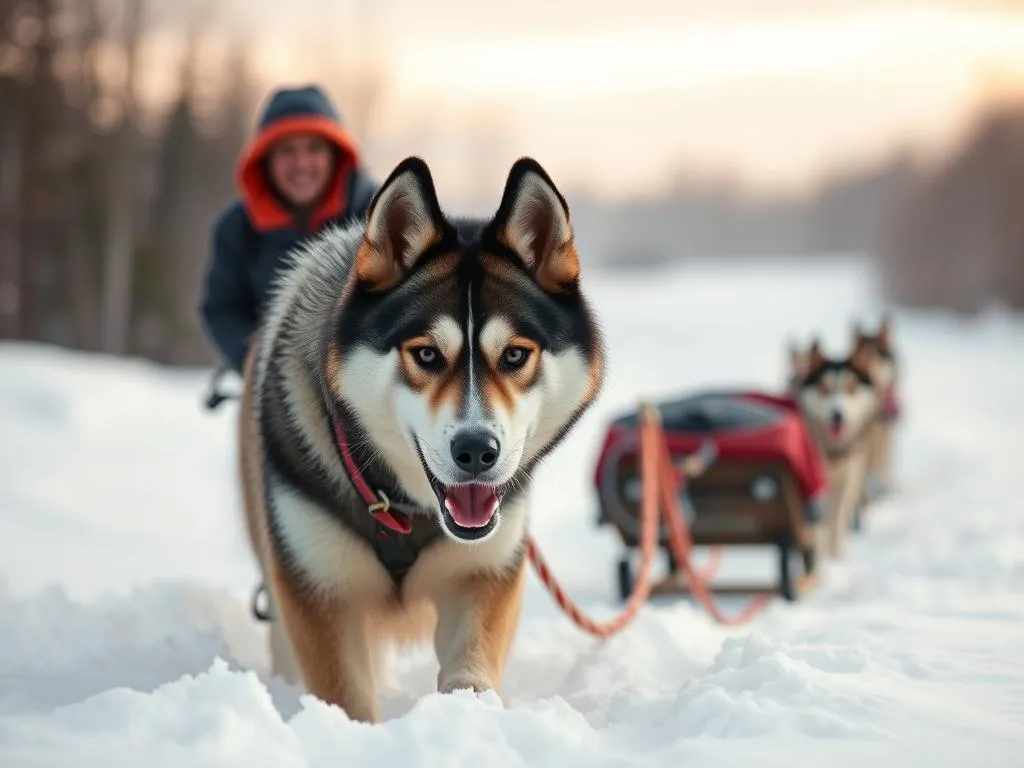
Introduction
Sled dogs have played an essential role in human history, especially in cold climates where they helped transport goods, people, and even competed in thrilling races. These incredible animals are not only athletes but also loyal companions. Training a sled dog is crucial for ensuring they perform their best while maintaining their health and happiness. In this comprehensive guide, we will explore the history and characteristics of sled dogs, the preparation needed for training, basic and advanced techniques, specific training for racing, health maintenance, and resources for sled dog enthusiasts.
Understanding Sled Dogs
History of Sled Dogs
Sled dogs have a rich history, with their origins traced back thousands of years. They were primarily used by indigenous peoples in Arctic regions for transportation and hunting. Over time, various breeds were developed to meet specific needs, leading to the creation of remarkable working dogs like the Alaskan Malamute and the Siberian Husky. These breeds are renowned for their strength, endurance, and ability to thrive in harsh conditions.
Characteristics of Sled Dogs
Sled dogs possess unique physical traits that make them excellent performers in their roles. They typically have strong, muscular bodies and dense coats that protect them from extreme cold. Their endurance allows them to pull heavy loads over long distances, making them invaluable in both work and sport.
Behaviorally, sled dogs are intelligent, social animals with a strong pack mentality. This means they thrive in groups and often require social interaction to be well-adjusted. Their drive to work and please their handlers is a key factor in their training and performance.
Preparing for Sled Dog Training
Choosing the Right Dog
Selecting the right sled dog is the first step in your training journey. Consider the breed’s characteristics and how they align with your goals. Breeds like the Siberian Husky or Alaskan Malamute are commonly chosen for their strength and stamina. Additionally, assess the individual dog’s temperament and physical condition. A dog with a friendly disposition and strong drive will be easier to train and work with.
Equipment Needed
Proper equipment is essential for effective sled dog training. The following gear is necessary:
- Harnesses: Fit your dog with a comfortable and well-fitted harness designed for pulling.
- Sleds: Choose a sled that suits the terrain and conditions you’ll be training in.
- Lines: Durable lines are crucial for connecting the sled to the harness.
- Safety Equipment: Helmets and reflective gear are important for the handler’s safety, especially in low visibility conditions.
Creating a Training Plan
A well-structured training plan is vital for success. Set realistic goals, such as mastering basic commands or gradually increasing distance. Create a timeline for different training phases, ensuring a balance between work and rest to prevent injuries.
Basic Training Techniques
Building a Bond with Your Dog
Before you dive into commands and training techniques, building a strong relationship with your sled dog is crucial. Spend quality time together through play and socialization. Activities like fetch or exploring new environments will strengthen your bond and foster trust.
Basic Commands
Teaching essential commands forms the foundation of your training. Key commands include:
- “Hike”: Signals the dog to start pulling.
- “Whoa”: Indicates to stop.
- “Gee”: Commands the dog to turn right.
- “Haw”: Commands the dog to turn left.
Use positive reinforcement techniques, such as treats and praise, to encourage learning. Consistency is key; ensure you use the same commands and tones each time.
Socialization and Exposure
Socializing your sled dog with other dogs and people is essential for a well-rounded animal. Exposure to different environments and stimuli will help your dog become more adaptable. Gradually introduce them to new experiences, ensuring each encounter is positive.
Advanced Training Techniques
Conditioning and Endurance Training
Conditioning is vital for a sled dog’s performance. Gradually increase their physical activity, focusing on building stamina. Techniques like interval training and pulling weights can help improve strength and endurance. Always monitor your dog’s health and adjust activities based on their condition.
Team Training
Sled dogs often work in teams, so training them to collaborate is crucial. Incorporate activities that promote teamwork, such as practicing commands in groups or allowing dogs to work together pulling lighter loads. This fosters communication and cooperation among the dogs.
Handling Challenges
Training sled dogs can come with challenges, such as distractions, aggression, or anxiety. Recognizing these issues early is essential. Use positive training methods and adjust your approach as needed. For instance, if a dog is easily distracted, work in a controlled environment before introducing more distractions.
Sled Dog Training for Racing
Preparing for Races
If you’re training for competitive racing, specific training regimens are necessary. Focus on building speed and endurance with shorter, more intense workouts. Nutrition also plays a critical role; high-quality, energy-dense food is essential for maintaining your dog’s health during training and competition.
Race-day Preparation
On race day, having a checklist can help you stay organized. Ensure your dog is well-rested, hydrated, and has a balanced meal before the race. Mental preparation is equally important; maintain a calm demeanor to keep your dog relaxed.
Health and Maintenance
Regular Health Checks
Regular veterinary check-ups are crucial for keeping sled dogs healthy. Ensure they are up-to-date on vaccinations and monitor for signs of common health issues, such as hip dysplasia or skin problems. Early detection of health issues can prevent more serious problems down the line.
Nutrition and Diet
Sled dogs have specific dietary needs to support their active lifestyle. A high-protein, high-fat diet is typically recommended to fuel their energy. During training and racing, ensure they have access to fresh water and consider electrolyte supplements for hydration.
Grooming and Care
Grooming is important, especially for breeds with thick coats. Regular brushing helps prevent mats and reduces shedding. Seasonal care is also vital; in winter, ensure your dog’s paws are protected from ice and snow, while summer requires attention to heat exposure.
Resources and Community
Training Classes and Workshops
Finding professional trainers can enhance your learning experience. Many regions have sled dog training classes and workshops that offer invaluable insights and practical skills. These settings also provide opportunities to connect with other sled dog enthusiasts.
Online Resources and Forums
The internet is a treasure trove of information for sled dog training. Websites, forums, and social media groups can offer support, tips, and camaraderie. Engaging with other sled dog owners can provide encouragement and new ideas for training.
Conclusion
Training a sled dog is a rewarding journey filled with challenges and triumphs. By understanding the history and characteristics of these incredible animals, preparing adequately, and utilizing effective training techniques, you can foster a strong bond with your dog and achieve impressive results in their training. Whether you’re interested in racing or simply enjoying the companionship of a sled dog, the key is patience and commitment. Start your sled dog training journey today, and enjoy the thrilling experience of working with these remarkable animals.









